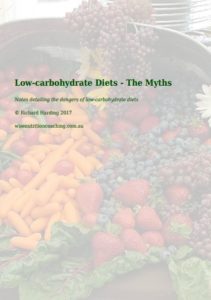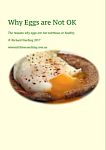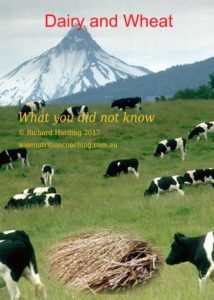How Cooking Changed Us
How Cooking Made Us Human

Richard Wrangham is a Professor of Biological Anthropology at Harvard University. He is also the curator of Primate Behavioral Biology at the Peabody Museum in Cambridge, Massachusetts and a director of the Kibale Chimpanzee Project in Uganda.
Wrangham began his career at Gombe Stream National Park in Tanzania as a member of Jane Goodall’s chimpanzee research team.
The standard view of evolution is that by eating meat, humans were able to evolve the larger brains that distinguish us from other primates. Wranghams’s view is that cooking food is a fundamental activity that transformed humans and our society. 1 He is not the first to propose this view but has developed the concept.
Cooking increased the value of our food. It changed our bodies, our brains, our use of time and our social relationships.
Australopithecines are human ancestors that walked upright, unlike chimpanzees or gorillas. They were at home in trees, about the same size as chimpanzees, similar digestive systems to other apes and a brain size very slightly larger than chimpanzees.
Sharp stone tools were found in Ethiopian rock that were created by our australopithecine ancestors 2.6 million years ago. These tools allowed them to dissect meat much more effectively than other primates.
By 2.3 million years ago, a new species had emerged. Habilines are the link between apes and humans. They were discovered by Jonathan Leakey in 1960 at Olduvai Gorge in Tanzania. They are about the same size as chimpanzees and australopithecines with twice the brain size. They had plenty of hair and were good at climbing trees.
Between 1.9 and 1.8 million years ago, a habiline species evolved into Homo erectus who could walk and run as we do.
According to Wrangham, the standard view that the eating of meat led to Homo erectus does not take into account the two stage development from australopithecines to habilines then habilines to Homo erectus.
Chimpanzees obtain about 5% of their energy from animal sources. Most is from insects such as termites. A tribe may capture a small monkey. However, this is opportunistic and months can pass without chimpanzees consuming meat.
Eating meat can account for the first transformation from australopithecines to habilines but not the second from habilines. Cooking appears to be the force behind out transformation into Homo erectus.
| MYA | Species | Events |
|---|---|---|
| 0.2 | Homo sapiens | Modern humans |
| 1.8 | Homo erectus | Use of fire and cooking, change to society with man-woman pairs and sharing of food with partner. Similar appearance to humans, with large change to anatomy. Smaller digestive system, mouth and jaw, loss of hair. Food more energy dense, softer and easier to digest, less astringent and sweeter. Much less chewing time. Cooking destroys bacteria. |
| 2.3 | Homo hablis | Tool makers and meat eaters |
| 3-6 | Australopithecus sp | Ape-like Australopithecus. Lucy was an A. afarensis that lived in Ethopia 3.2 mya. |
All human societies depend upon cooking for survival. Inuit consume more raw meat than any other society but their main meal of the day is a cooked evening meal.
Advantages of Cooking
Cooking has a big impact on food. It
- improves the taste of foods
- removes toxins
- makes food softer and easier to digest
- increases the nutritional value of food
- reduces spoilage
- increases the amount of energy obtained from food
The Giessen Raw Food study 2 is the most comprehensive study relating to raw food consumption. It was conducted by nutritionist Corinna Koebnick and colleagues from the Institute of Nutritional Sciences at University of Giessen in Germany.
The objective was to determine the “nutrition and health habits of people following raw food diets in Germany”.
The participants in the study were categorised as omnivores (all food groups), vegetarian (exclusion of meat, fish, sea foods and their products) or vegan (vegetarian with the exclusion of dairy products and eggs). The 513 participants ate 70 to 100% of their diet raw. Some items were lightly heated.
The conclusion was that “a strict raw food diet cannot guarantee an adequate energy supply.” Mild heating, blending, grinding, and sprouting were used which reduces the particle size and leads to an increase in energy produced. About 30% of the energy consumption came from added oils and the participants were still under nourished.
Our Digestive Systems
The amount of energy required to process a raw food diet is much greater than a diet of cooked food. All animals grow quicker on a diet of cooked food.
Compared with other apes humans have a relatively small digestive system. Our mouths, jaws, teeth, stomachs and colons are relatively small. Wrangham believes that these changes are better explained as an adaption to cooking food than to eating meat.
The mouths of apes are much larger. Chimpanzees spend 5 – 6 hours a day chewing their food. They also eat food with apparent relish that we find extremely distasteful.
Our jaw muscles are much weaker than apes. Given that cooked food is much softer, we do not need strong muscles to chew hard raw food. Similarly, our teeth are the smallest of the primates.
Our stomachs are comparatively very small. Since cooking increases the amount of energy available in the food, our stomachs do not need to be very big. The great apes eat about twice as much food, by weight, as we do.
The small intestine is the main organ of digestion and absorption of nutrients. It is only slightly smaller than expected in comparison to other apes. The large intestine, however, is comparatively quite small. This is where fermentation of plant fibre takes place. Because of cooking, this process is of less importance to humans than other apes.
The reduction in size of our digestive system reduces the energy cost of digestion.
A frequent question is “what is the natural diet of humans?” This question ignores the fact that evolutionary changes are affected by behaviour. Giraffes have evolved with long necks because males fight for breeding rights using the necks as weapons. The long necks are actually an inconvenience when it comes to feeding. 3
It is easy to argue that cooking food is not natural – after all no other species cooks their food. (Although chimpanzees are known to hunt for nuts that have been cooked in bush fires.) However, since cooking become the norm in human societies, our bodies quickly adapted to the new circumstances.
Other species of animals maintain body temperature by have hair or fur. Since fire allows us to maintain body heat without hair gives other advantages. We can remain active for much longer and travel much further, especially during the heat of the day. Also, naked humans have less parasites. Monkeys spend a lot of time grooming to remove parasites which has the added benefit of cementing social bonds.
Social Structures
Feeding strategies of animals have a profound effect on the social structures of the group.
Apes spend 5 – 6 hours a day chewing food. Wrangham argues that cooking substantially reduces the time required for chewing which led to the sexual division of labour. Since we no longer need to spend hours a day chewing, women in subsistence societies collect and prepare food whilst men hunt or engage in other activities – either productive or unproductive. Whilst the activities vary in different societies, women and men make different and complimentary contributions to the group.
This practice results in the sharing of food within the family group. Meat is frequently shared within the entire community. Other apes do not share food that has been gathered.
Women tend to provide the staple foods. Obtaining food from hunting is less reliable.
Last updated on Monday 5 December 2022 at 20:58 by administrators
Footnotes
- Wrangham, R. (2008) Catching Fire: How Cooking Made Us Human. Basic Books.
- Institute for Nutrional Sciences (n.d.) Giessen Raw Food Study — Institute of Nutritional Sciences [online]. Available from: https://www.uni-giessen.de/faculties/f09/institutes/institute-for-nutritional-sciences/units/nutrec/research/epidemiological-studies-on-populations-with-different-regimens/giessen-raw-food-study (Accessed 15 March 2016).
- Simmons, R. E. & Altweg, R. (2010) Necks-for-sex or competing browsers? A critique of ideas on the evolution of giraffe. Journal of Zoology. 282 (1), 6–12.





